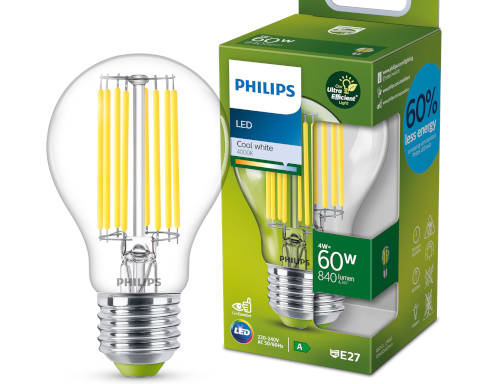But for all the talk about how the incandescent was a veritable flick of the wrist away from meeting LED efficiency when the mandates were looming 15 years ago, it would seem that the lab advancements remain in the lab for reasons not entirely clear. I suspect the concept failed because it promised three out of three for electronics - which can be cheap, simple, efficient: pick two. Things can change of course, but much like a hyped nuclear energy announcement not too long ago it's too uncertain to plan on at this point.
"But for all the talk about how the light emitting diode was a veritable
flick of the wrist away from meeting incandescent efficiency when the mandates were looming 15 years ago, it would seem that the lab advancements remain in the lab for reasons not entirely clear. I suspect the concept failed because it promised three out of three for electronics -
which can be cheap, simple, efficient: pick two"
-- Joe P. Shortsighted,
1982.
Point here being, idleprocess, anyone could have said the exact same thing about LED in the early 1980s. LED lighting
took some 50 years to mature, and the entire time the focus was on getting the same brightness as incan with less watts. After Edison found the right formula for incandescent lighting, there was R&D for decades to be sure,
but it was not focused on efficiency, rather instead on durability. Eventually, but not too much later, the focus was on making certain a bulb would fail after x number hours and need replacing. The handwaving that you are performing to dismiss a notable leap forward that only occurred
less than a decade ago is utterly astounding and honestly shocking coming from you. In April 1932 John Cockcroft and Ernest Walton split the atom for the first time. Would you, in 1939, be there handwaving away and condemning the viability of nuclear power for the reasons you just gave? Then, surprise, the first commercial nuclear power plant opened 18 years later in Shippingport, Pennsylvania. Not even in 2035 would your handwaving regarding the 2016 advancement in incan efficiency be prescient or valid. We do not know the future, and though we may have an idea of the form it will take, we have absolutely no idea where technology will go nor how far, so can we please not pretend like we do?
Someone oughta make a list of makers that don't use false advertising... gotta be easier than listing the ones that do, right?
Did anyone think at all about our batteries? I believe the response from a manufacture would be, "to be sure, the advertising is accurate. If only your cell was up to the task. Get better batteries," knowing full well they don't exist yet, if they ever will. Does anyone here see my point, or are we just going to follow one another off the cliff in outrage?


